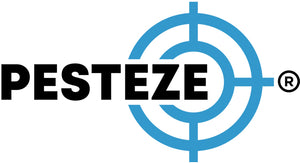HOW TO BIRD-PROOF YOUR CHIMNEY AND VENTS

HOW TO BIRD-PROOF YOUR CHIMNEY AND VENTS
SUMMARY
Chimneys and vents provide ideal nesting locations for birds, leading to blocked airflow, fire hazards, and expensive repairs. This essential guide covers professional installation methods for chimney caps, vent covers, and screening systems that protect your home's ventilation while preventing dangerous bird intrusions.
FEATURES
- Fire Safety Protection: Prevents dangerous nest materials from blocking flues and creating fire hazards.
- Airflow Maintenance: Maintains proper ventilation while excluding birds from critical home systems.
- Professional Installation: Step-by-step guidance for secure, code-compliant barrier installation.
- Multiple Vent Types: Solutions for dryer vents, bathroom fans, kitchen exhausts, and HVAC systems.
- Seasonal Considerations: Year-round protection strategies adapted to nesting and migration patterns.
- Code Compliance: Methods that meet building codes while providing effective bird exclusion.
GUIDE DESCRIPTION
Chimneys and vents offer birds protected cavities that closely mimic natural nesting sites, but bird activity in these areas creates serious safety hazards including blocked airflow, carbon monoxide risks, and fire dangers from nesting materials. Effective bird-proofing requires specialized barriers that maintain proper ventilation while completely excluding birds.
Chimney caps provide the most comprehensive protection for fireplace and furnace flues. Quality caps feature stainless steel mesh with openings small enough to exclude birds while allowing proper draft and spark arrestment. Professional installation ensures proper fit and compliance with local fire codes, while removable screens facilitate annual chimney cleaning and inspection.
Dryer vent protection requires careful balance between bird exclusion and lint discharge. Standard dryer vent covers often fail because birds can easily access the interior space. Specialized dryer vent guards with spring-loaded flaps prevent bird entry while allowing normal operation, though regular maintenance is essential to prevent lint buildup that can compromise function.
Bathroom and kitchen exhaust vents need protection that doesn't interfere with moisture and odor removal. Louvered vent covers with fine mesh backing provide bird exclusion while maintaining airflow capacity. Installation should include caulking around the perimeter to seal gaps where small birds might enter alongside the main vent opening.
Roof vents for plumbing systems present unique challenges because they must maintain proper drainage pressure relief. Vent pipe covers with umbrella designs shed rain while excluding birds, but mesh screens can become clogged with debris and ice. Professional assessment helps determine the most appropriate protection method for each vent type and local climate conditions.
HVAC system vents require specialized attention because blocked airflow can damage expensive equipment and create safety hazards. Fresh air intake vents need protection that doesn't restrict airflow capacity, while exhaust vents must accommodate high-temperature discharge. Consultation with HVAC professionals ensures bird-proofing doesn't compromise system performance or warranty coverage.
Installation timing is crucial for effective bird-proofing. Fall installation allows work to proceed without disturbing active nests, while spring installation may require professional nest removal services to ensure legal compliance. Winter installation can be challenging but prevents problems during the upcoming nesting season.
Regular maintenance keeps bird-proofing systems functioning properly. Annual inspections should check for damaged screens, loose fasteners, and debris accumulation that might compromise effectiveness. Cleaning schedules depend on local conditions, with coastal areas requiring more frequent attention due to salt corrosion concerns.
Professional installation is strongly recommended for most chimney and vent applications due to safety hazards and code requirements. Roof work involves significant fall risks, while improper installation can create fire hazards or carbon monoxide dangers. Licensed contractors have proper equipment and knowledge of local building codes governing vent protection systems.
Cost considerations should factor in both installation expenses and potential damage prevention. Professional chimney cap installation typically costs $200-500 but prevents thousands in damage from birds, water intrusion, and fire hazards. Vent protection costs vary by type and accessibility but represent small investments compared to HVAC system repairs or carbon monoxide incidents.
Quality materials make significant differences in longevity and effectiveness. Stainless steel components resist corrosion and maintain structural integrity over decades, while cheaper alternatives may fail within years and require replacement. Warranty coverage often depends on professional installation and quality materials, making premium options cost-effective long-term choices.
- Pukhraj Sharma


Comments 0